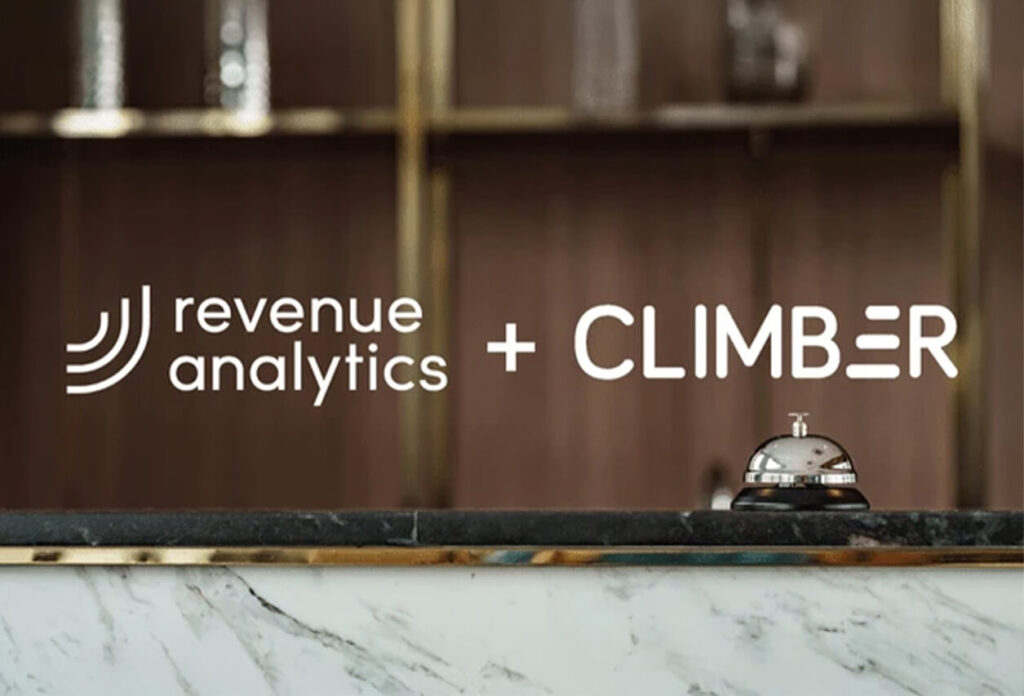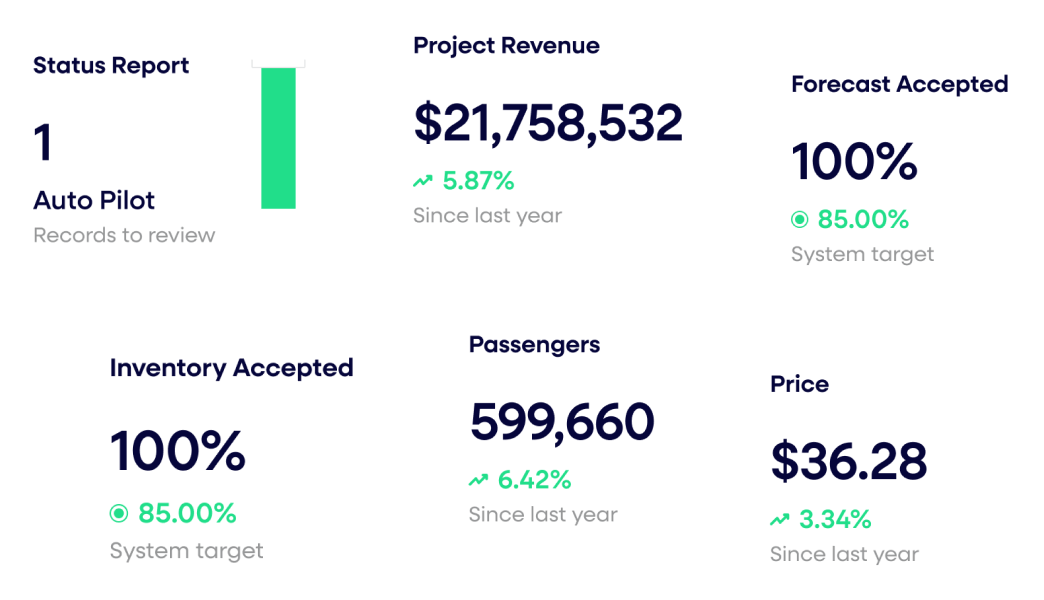The 6 Demand Forecasting Questions You Should Be Asking Now

“The RMSs having the most success use multiple forecasts.”
Timothy Wiersma, CRME, Principal of Revenue Generation LLC, shares his thoughts on the importance of a reliable demand forecast in HSMAI’s guide, Rethinking the RMS for the Travel Recovery & Beyond.
Here’s what else revenue management experts are thinking:
- Forecasting is BROKEN.
- That’s a BIG problem. It’s the most critical piece of my RMS.
- My team and I can’t do our jobs without forecast tools we can trust.
- (For some) This problem is going to make it harder to justify the cost of our RMS to our leaders.
- What exactly should I do about it?
The first thing to keep in mind is that forecasting capabilities are very different from one Revenue Management System (RMS) provider to the next.
Leverage your content to achieve stronger revenue outcomes
Given that demand forecasting is so important (it’s the beating heart of an RMS), many Revenue Management leaders are taking the time to explore differences in demand forecast methodologies and capabilities across RMS providers. They are considering innovative solutions, rather than accepting the nightmare of broken forecasts.
To help on your journey of exploration, we’ve compiled some of the best intel on evaluating demand forecasting – straight from revenue leaders themselves (chronicled in HSMAI’s guide to RMSs) and from the data experts at Lighthouse.
How to evaluate an RMS provider’s forecast
Here are 6 key questions to evaluate new RMS partners and to ensure you are getting the best forecasting from your current provider.
1 – Does the forecast have adjustable weighting?
One of the biggest challenges is figuring out how to handle pandemic-era data.
Eric Gravelle, Vice President of Revenue Management for Diamond Resorts International shared:
“The big debate is: Do you use 2020 data, and how? We’ve had a few markets that had record years, so we don’t want to entirely discount that, but there are places where we can’t rely on the data.”
That’s why it’s so important that forecast models have parameters that can be configured or tuned based on a user’s perspective, aka, “adjustable weighting.”
And this weighting must enable a response to COVID data that’s both robust (for adequacy) but also granular (for precision).
For example, with N2Pricing RMS (Revenue Analytics’s RMS), those dates and hotels most impacted by COVID are replaced with 2019 actuals and then an appropriate factor (ex: 81%) is applied and used in the long-term forecast.
Further, demand forecasts incorporate both ‘Last Year’ and ‘Recent Time’ curves. In this post-pandemic world, more people are making last-minute travel decisions, collapsing booking windows. In response, our software has increased forecast accuracy by weighting ‘Recent Time’ more heavily than history.
Importantly, all of our parameters can be modified down to the individual hotel level. For hotels that are experiencing a much shorter booking window now, our software would weight that ‘Recent’ trend curve more heavily. But for hotels whose booking pattern didn’t dramatically change, it wouldn’t change that weighting, nor would it ‘override’ 2020 actuals with 2019 data.
Takeaway: Make sure your RMS provider has this kind of ‘dynamic’ forecast with adjustable weighting that’s both robust and precise. You can’t get by without it now.
2 – Can the RMS utilize future demand signal data?
Does your RMS ingest forward-looking demand data? Many RMSs unfortunately don’t.
Said Nikos Karivalis, Director of Revenue Management for Brown Hotels:
“Most RMSs don’t look at upper-funnel data…they’re not looking at more future-looking demand signals like flights, web searches, which is instructive, especially now.”
And with historical data on the fritz, more and more revenue leaders are looking beyond historical data and bookings and to future signals to get a clearer picture of demand and move ahead of the booking curve.
Examples of this data include:
- Hotel search data– Hotel search data is gathered from various sources, including OTAs, and metasearch sites. It tells you the destinations travelers are considering, what dates they’re looking at, their length-of-stay, and what type of accommodations they want.
- Flight search data– This data tells you the volume of travelers expected to travel to your market on a daily basis and where they’re coming from.
- Alternative accommodation availability– Knowing how many alternative accommodation listings you may be up against for different length of stays (LOS), and at which price point, completes the picture of consumer choice.
- Dynamic compset– With dynamic competitive set data, you are no longer limited to a static group of pre-COVID competitors but can see how your hotel’s rates and availability measure up against a wider selection of competitors that change with market shifts.
- Forward-looking data—via predictive market intelligence solutions like Market Insight from Lighthouse—helps hoteliers respond to signs of increased demand before the competition, so they can drive revenue with more informed pricing and marketing decisions.
For example, Julia Vereskun, Director of Revenue Management at Hotel Metropol shared:
“With Market Insight we noticed a new destination was actively searching for Moscow… we launched a digital campaign in Google to target consumers in that destination. We reduced cost per action by 30% and increased the number of bookings by 42.5%.”
Having this data integrated directly into your RMS, rather than viewing it in a separate system, ensures your demand forecast and RMS pricing recommendations have future demand signals already factored in.
Takeaway: Make sure your RMS provider can ingest future demand signal data. It’s a valuable supplement to more traditional data sources.
3 – How many models does the RMS use?
Some legacy RMSs only use 1 or 2 models. Others use dozens or hundreds.
The reality is that more really is better when it comes to modeling demand.
So, in stark contrast to legacy approaches, modern RMSs achieve boosts in accuracy by using a library of thousands of forecast models and a horserace-like “pick-best” process that selects the most accurate algorithm for each hotel and market segment.
This innovation has yielded significant gains in accuracy. Tim Wiersma, CRME and Principal of Revenue Generation LLC, noted:
“The Revenue Management systems that are having more success are the ones that are doing multiple forecasts. They’re not placing their bets on just one forecast. They’re playing multiple algorithms to come up with a forecast and then tracking the results for accuracy.”
If you have fewer forecast models, then it’s an absolute certainty that your forecast accuracy is not optimal. The question is simply: how suboptimal is it?
Takeaway: Ask your RMS provider how many models they use and how often those models are updated and retested?
4 – Does it have intraday updates? Can you control the timing of them?
Booking windows have been shrinking steadily for years and COVID shortened them even more.
So, particularly for hotels in dynamic markets, and for most economy and midscale hotels with significant same-day demand, the ability to update the forecast multiple times a day is crucial.
But it’s not just how many times the forecast is updated that’s important; It’s critical to be able to determine when the forecast is updated.
Jennifer Schneider, Vice President of Revenue Management for Radisson, illustrated:
“Once a day is useless. And how much control do you have over the timing? Overnight means different things in different time zones. If you select one time zone – say, East Coast – and it’s going to update at 6 a.m., you’re interfering with check-in and check-out.”
The best forecasts are also price sensitive, meaning they will adjust based on where a hotel’s pricing stands against its compset. Intraday forecasts are key to account for competitor price changes made throughout the day.
Takeaway: Make sure your RMS has intraday update capabilities and that the timing of updates can be controlled.
5 – Does it automatically identify special events?
Special event mapping is another manual activity that has long been standard functionality in an RMS.
It remains critical functionality for many single-property DORMs. But in many RMSs, this functionality has been used less over time as revenue managers manage multiple properties.
And special event mapping is certainly too detailed and complex for a busy General Manager.
So, time-strapped users will benefit greatly from an RMS with more automation, such as an engine that automatically detects special events and appropriately adjusts the forecast to account for them.
Takeaway: If you have multi-property managers on staff, look for an RMS that identifies special events automatically rather than requiring manual mapping.
6 – How quickly does the RMS respond to pacing?
Pace reports are the go-to tool for many revenue managers.
They are so significant, in fact, that the financial forecast follows pacing: revenue managers increase their financial forecast when pace is strong and decrease it when pace lags.
So, understandably, speed matters a great deal – Revenue Managers and General Managers simply don’t have time to manually develop demand projections and feed them into an RMS.
The good news: most RMSs today do increase or decrease the forecast based on how bookings are pacing.
The bad news: revenue managers often complain that the response is not nearly quick enough for their purposes, which is why it’s important to look for an RMS with a forecast that responds to pace quickly.
Takeaway: Ask your RMS provider how quickly their forecast adjusts based on pacing.
More help with forecasting and RMSs
We hope this deep dive into forecasting was helpful to you and your team. To learn more about how to improve forecast accuracy and other critical things to look for in an RMS, download HSMAI’s guide to RMSs.
Last updated on August 22, 2025





